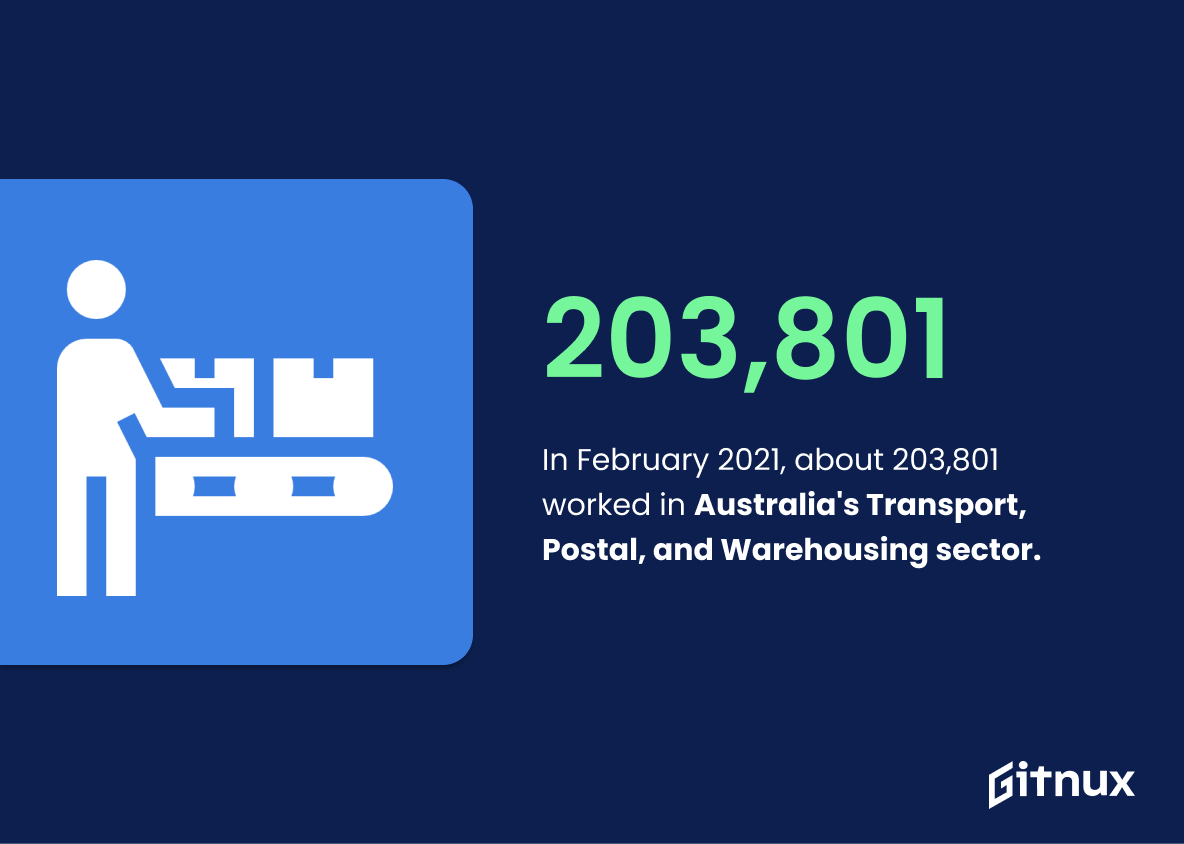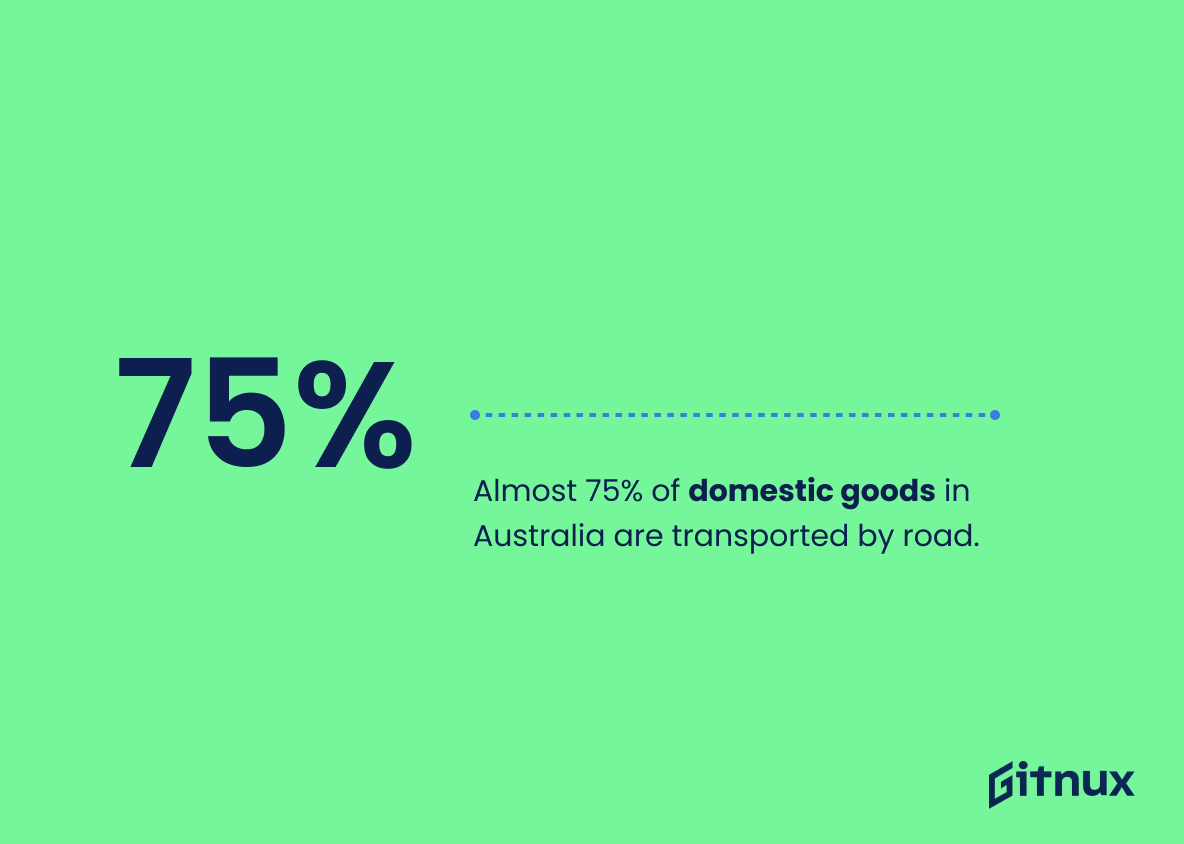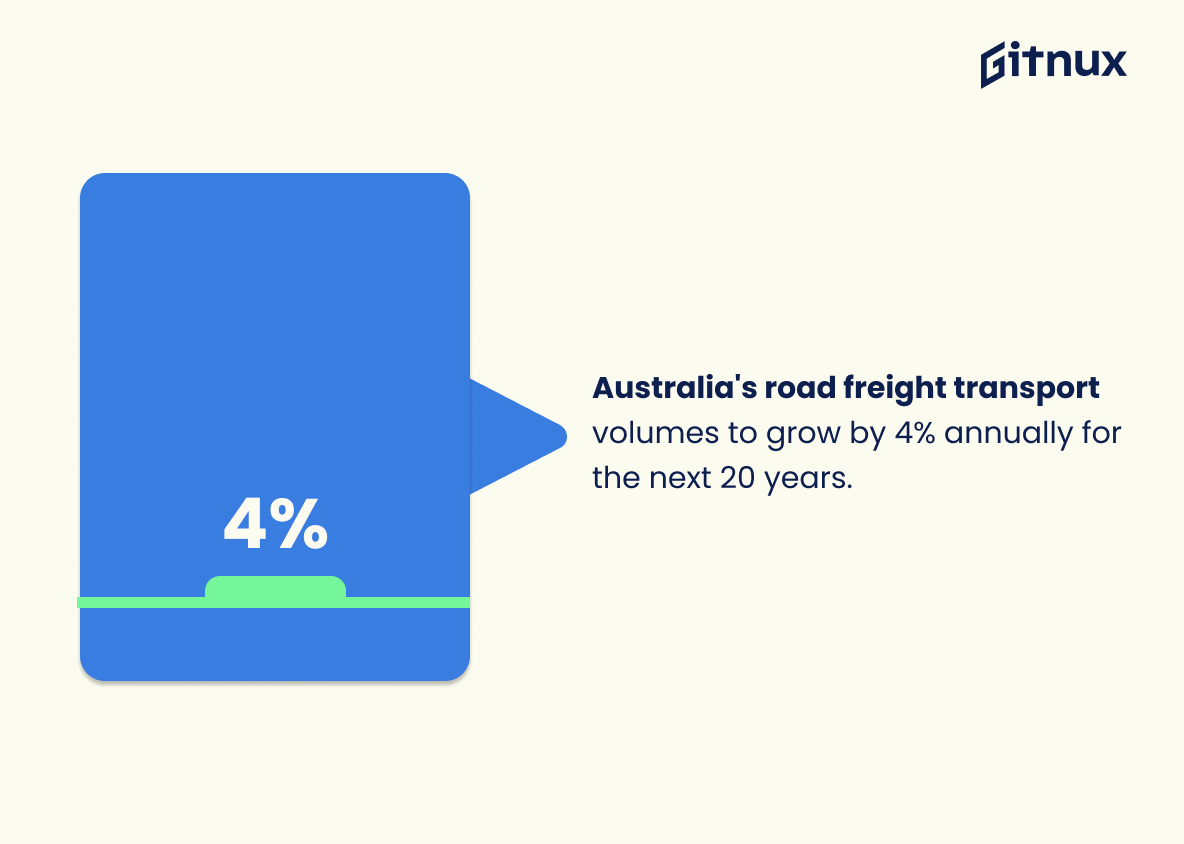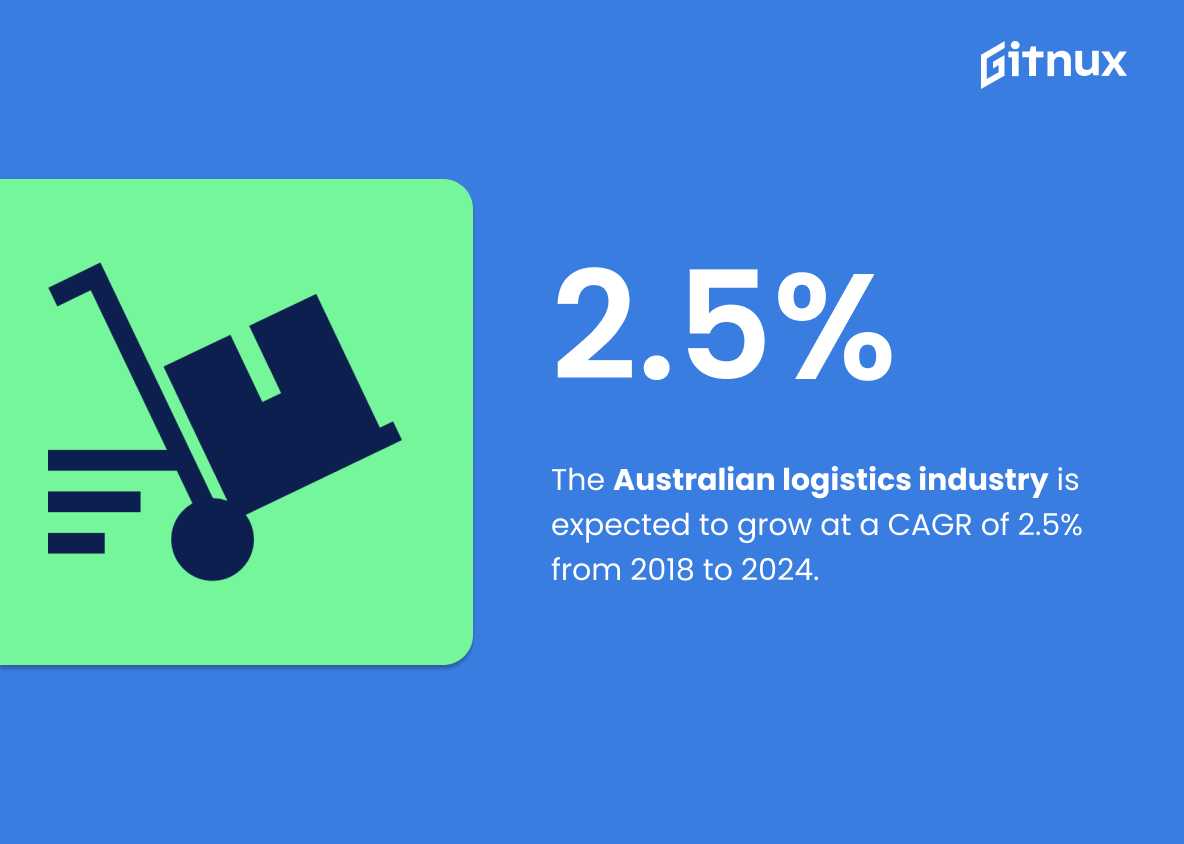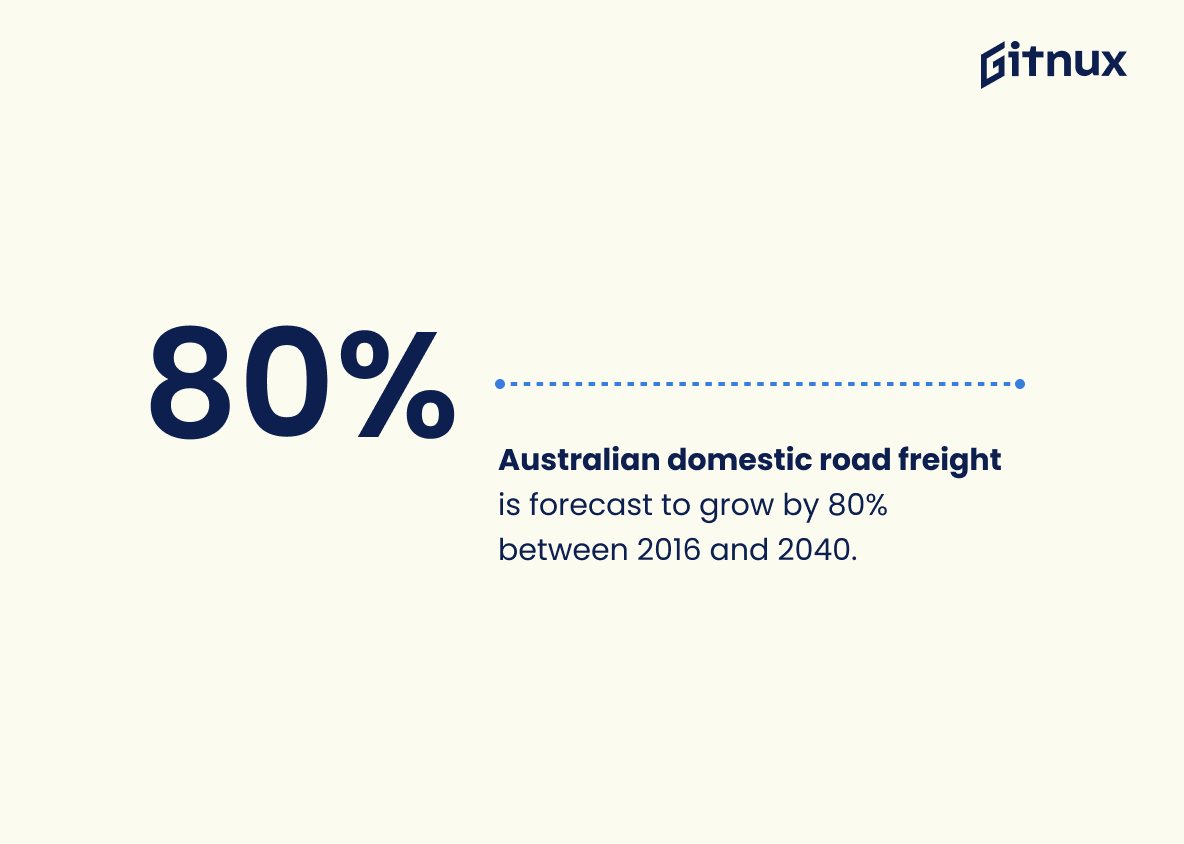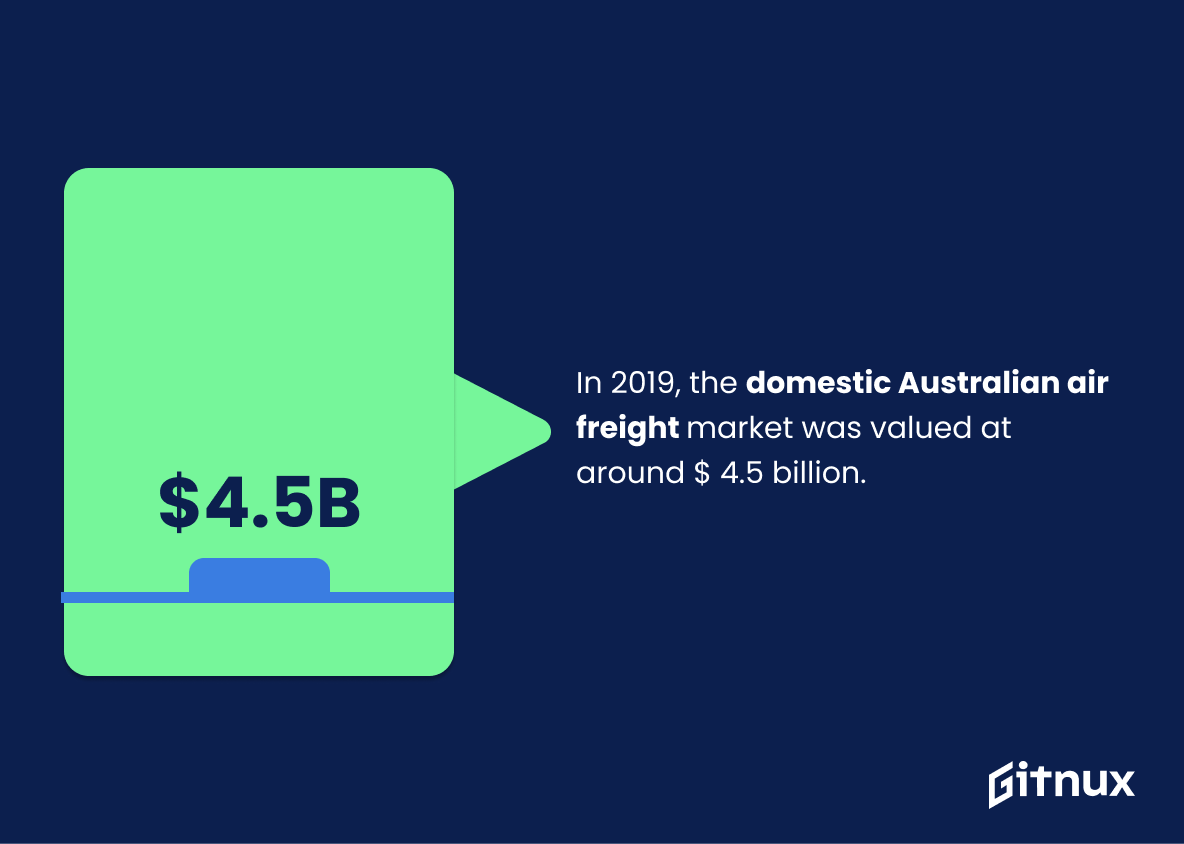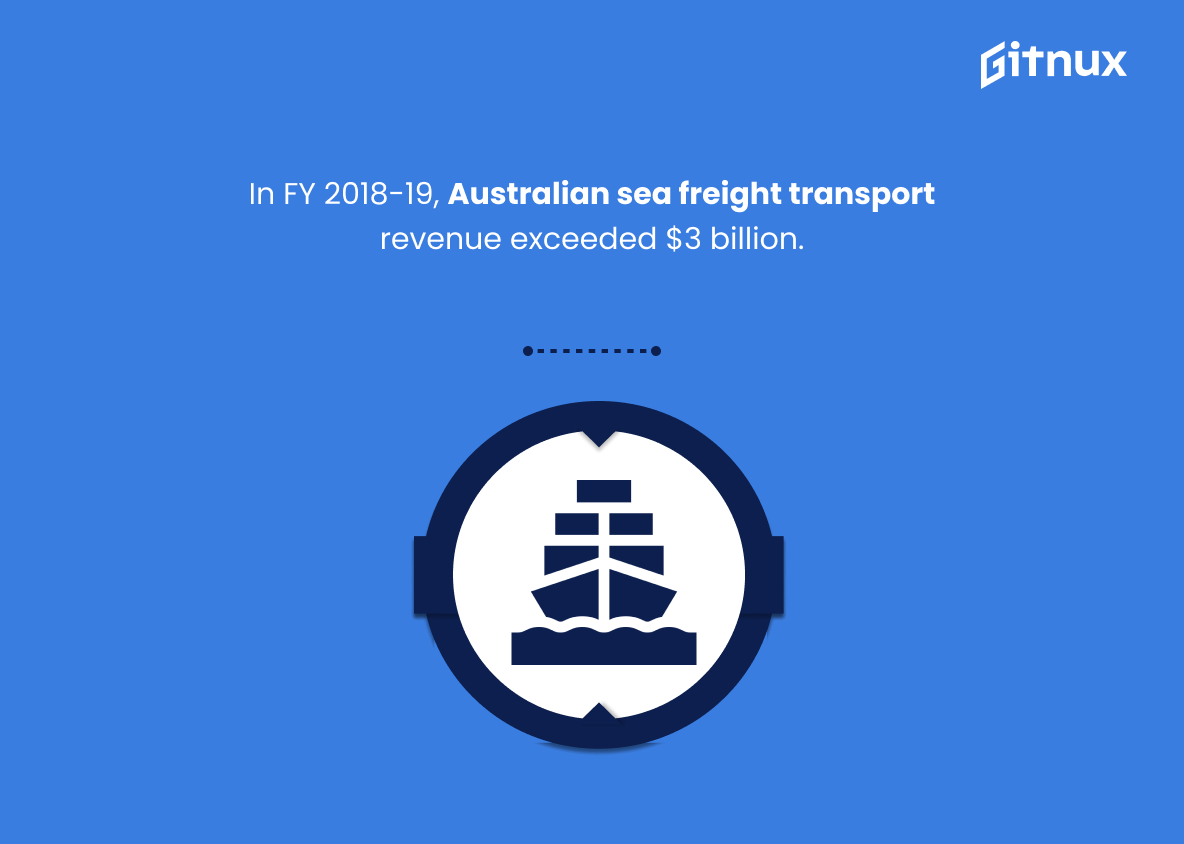The transport and logistics industry plays a vital role in the Australian economy, contributing around 8.6% to Australia’s GDP. This sector is made up of over 47,000 businesses employing 203,801 people as of February 2021. In 2018-19 alone, the total revenue for this industry was $71.7 billion with freight task increasing by 50% between 2010 and 2016.
Railways moved 1.3 billion tonnes of freight in 2019-2020 while almost 75% of domestic goods were transported by road that same year – an amount expected to grow 4% per annum over the next 20 years according to estimates from 2020 data sources such as BITRE (Bureau Of Infrastructure Transport And Regional Economics). Ports handled 1,456 million tonnes international cargo movements in 2019-20 with 89 percent being bulk commodities; meanwhile airlines carried 60 million passengers domestically during that same period and there were 3+ million registered trucks on roads across Australia at end of 2019 too.
Looking ahead into 2024 projections suggest growth within the logistics market will be 2.5%, trucking’s share 72%, rail 49%.9%, airfreight valued at $4 .5billion & sea freight generating revenues exceeding $3billion respectively – all whilst Total Freight Task increases 75%. With so much activity taking place it’s no wonder why statistics are essential when understanding how our nation moves forward economically through its transportation networks.
This statistic is a testament to the immense importance of the transport and logistics industry to the Australian economy. It highlights the significant contribution this sector makes to the nation’s GDP, demonstrating its vital role in the nation’s economic success.
In Australia, over 47,000 businesses are operating in the road transport industry.
This statistic is a testament to the sheer size and scope of the road transport industry in Australia. It highlights the importance of this sector to the Australian economy, and the sheer number of businesses involved in it. It also serves as a reminder of the need for continued investment in the industry, in order to ensure its continued success.
Australian Transport Industry Statistics Overview
Approximately 203,801 people are employed in the Transport, Postal, and Warehousing sector in Australia as of February 2021.
This statistic is a telling indication of the importance of the Transport, Postal, and Warehousing sector in Australia. With over 200,000 people employed in this sector, it is clear that this industry is a major contributor to the Australian economy. This statistic is a testament to the significance of the Transport, Postal, and Warehousing sector in Australia and provides a valuable insight into the current state of the industry.
In 2018-19, the total revenue for the Australian transport industry was around $71.7 billion.
This statistic is a testament to the sheer size and scope of the Australian transport industry. It highlights the immense economic impact of the industry, and the importance of its continued growth and development. It also serves as a reminder of the importance of investing in the industry, in order to ensure its continued success.
Almost 75% of domestic goods in Australia are transported by road.
This statistic is a telling indication of the importance of road transport in Australia. It highlights the fact that the majority of goods are transported by road, making it a vital part of the country’s transport infrastructure. This is especially relevant in the context of a blog post about Australian Transport Industry Statistics, as it provides a valuable insight into the industry and its reliance on road transport.
Road freight transport volumes in Australia are expected to grow by 4% per annum over the next 20 years.
This statistic is a crucial indicator of the future of the Australian transport industry. It suggests that the industry is set to experience steady growth over the next two decades, providing a strong foundation for businesses to build upon. This is a positive sign for the industry, as it indicates that the sector is likely to remain a key contributor to the Australian economy.
In 2019, there were more than 3.1 million registered trucks in Australia.
This statistic is a telling indication of the size and scope of the Australian transport industry. It highlights the sheer number of trucks that are registered and actively used in the country, demonstrating the importance of the industry to the nation’s economy. It also serves as a reminder of the need for efficient and safe transport systems, as well as the need for regulations and policies to ensure the safety of drivers and other road users.
The Australian logistics industry is expected to grow at a CAGR of 2.5% from 2018 to 2024.
This statistic is indicative of the potential for growth in the Australian logistics industry, providing a glimpse into the future of the industry. It is an important piece of information for anyone interested in the Australian transport industry, as it provides insight into the potential for investment and expansion in the sector. Furthermore, it can be used to inform decisions about the direction of the industry, and to identify areas of opportunity for businesses and investors.
In 2020, the trucking industry’s share of the Australian domestic freight task was 72%.
This statistic is a powerful indicator of the trucking industry’s importance to the Australian domestic freight task. It highlights the sheer magnitude of the industry’s contribution to the nation’s transport infrastructure, and serves as a reminder of the vital role it plays in keeping the country’s economy running. It is a key piece of information that should be taken into account when discussing the Australian transport industry and its statistics.
Australian domestic road freight is forecast to grow by 80% between 2016 and 2040.
This statistic is a powerful indicator of the potential for growth in the Australian transport industry. It highlights the immense opportunity for businesses to expand their operations and take advantage of the increasing demand for domestic road freight. With such a significant increase in demand, it is clear that the transport industry is set to become an increasingly important part of the Australian economy. This statistic is a clear sign that the industry is on the rise and is a great opportunity for businesses to capitalize on.
In 2019, the domestic Australian air freight market was valued at around $ 4.5 billion.
This statistic is a testament to the immense size and importance of the domestic Australian air freight market. It highlights the significance of the industry to the Australian economy, and the need for continued investment and development in order to ensure its continued success. It also serves as a reminder of the importance of the transport industry in Australia, and the need to ensure that it remains a key contributor to the nation’s economic growth.
In the financial year 2018-19, the Australian sea freight transport industry generated a revenue of over $3 billion.
This statistic is a testament to the immense success of the Australian sea freight transport industry in the financial year 2018-19. It highlights the industry’s ability to generate a substantial amount of revenue, demonstrating its importance to the Australian economy. This statistic is an invaluable insight into the performance of the Australian transport industry and provides a valuable reference point for future analysis.
Conclusion
The Australian transport industry is a major contributor to the country’s economy, with 8.6% of GDP coming from this sector in 2018-19. The road freight transport industry alone employs over 203,801 people and generates $71.7 billion in revenue annually. In addition, there are 47,000 businesses operating within the road transport sector as well as 1.3 billion tonnes of freight moved by railways each year and 108.9 billion tonne-kilometres transported on roads annually in 2020 alone – demonstrating just how important this industry is for Australia’s economic growth and development into the future. With an expected 4% annual growth rate for road freight volumes over the next 20 years and 75% increase projected between 2016-2040 for total Freight Task across all modes of transportation – it is clear that Australia’s Transport Industry will continue to be a key driver of economic activity both now and into the future
References
0. – https://www.mordorintelligence.com
1. – https://www.truck.net.au
2. – https://www.abs.gov.au
3. – https://www.ntc.gov.au
4. – https://www.ibisworld.com
5. – https://www.aph.gov.au
6. – https://www.ga.gov.au
7. – https://www.nationalplatform.intersearch.com.au
